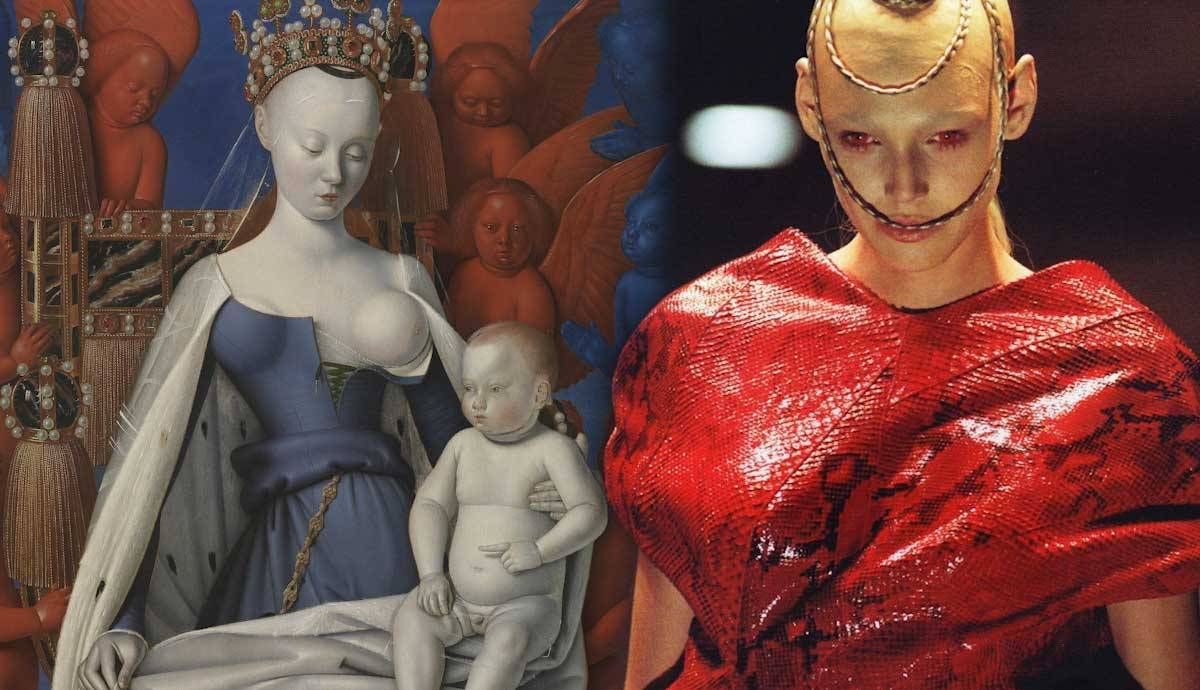
The legend of British fashion Alexander McQueen barely needs an introduction. During the eighteen years of his career, he never ceased to shock, provoke, and inspire people. He was not just a designer but a well-educated artist as well, so he constantly referred to moments from the history of art. Take a look at five collections for which McQueen found inspiration in painting, photography, and installation art.
Who was Alexander McQueen?
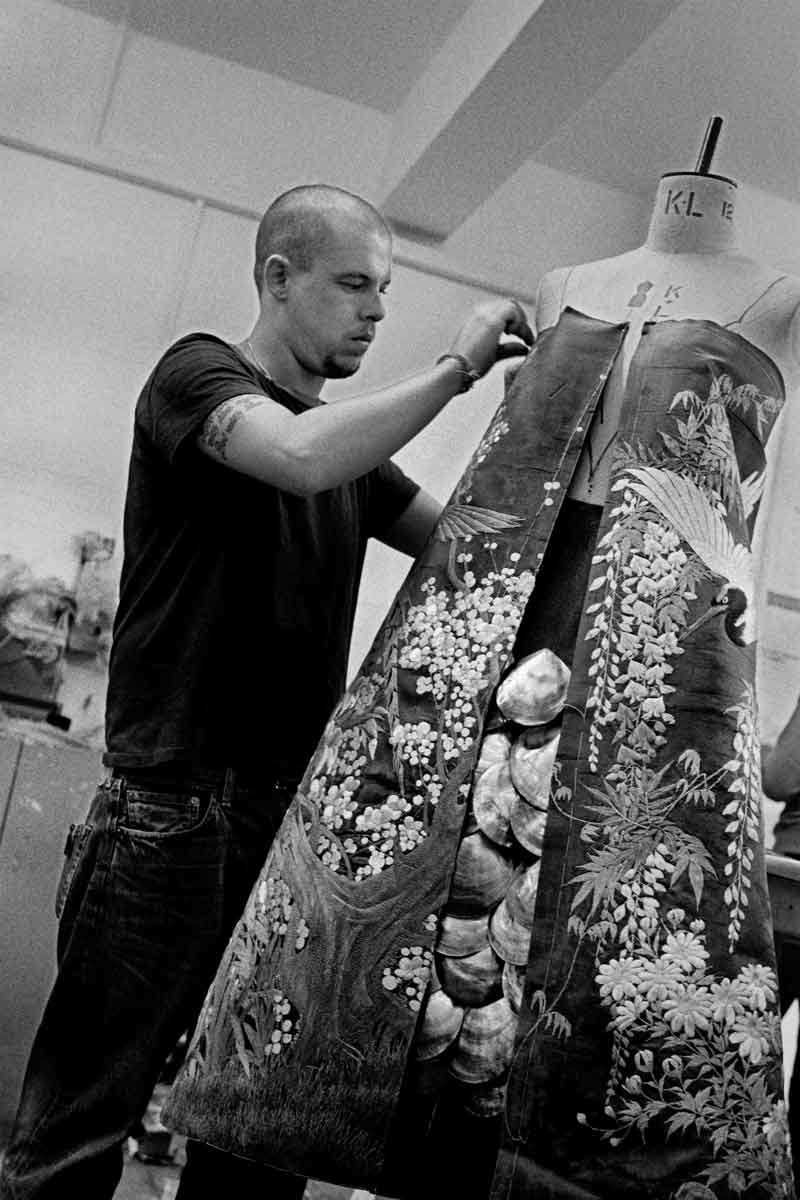
Lee Alexander McQueen was the name of the legendary British designer who once and for all changed the idea of what fashion could be. Coming from a working-class background, he managed to secure an apprentice position at Savile Row, the street known for famous tailors ateliers. Despite his fragmented formal education, McQueen had a deep knowledge of the history of art, fashion, and visual culture. He was obsessed with everything Victorian and Medieval, always with a macabre undertone to it. His graduation collection titled Jack the Ripper Stalks His Victims was morbid but stunningly beautiful and it set the tone for his further creations.
Another source of inspiration for McQueen was his Scottish heritage. He was bitterly critical of English designers who exploited Scottish tradition in fashion statements. This opinion earned him several scornful comments from another legend of British fashion, Dame Vivienne Westwood, an Englishwoman who also used Scottish tartan in her creations.
Calling Alexander McQueen just a garment designer would be a great disservice to his memory and legacy. He was a performance artist, a sculptor, and a storyteller. His creative imagination could not possibly fit into one realm of art.
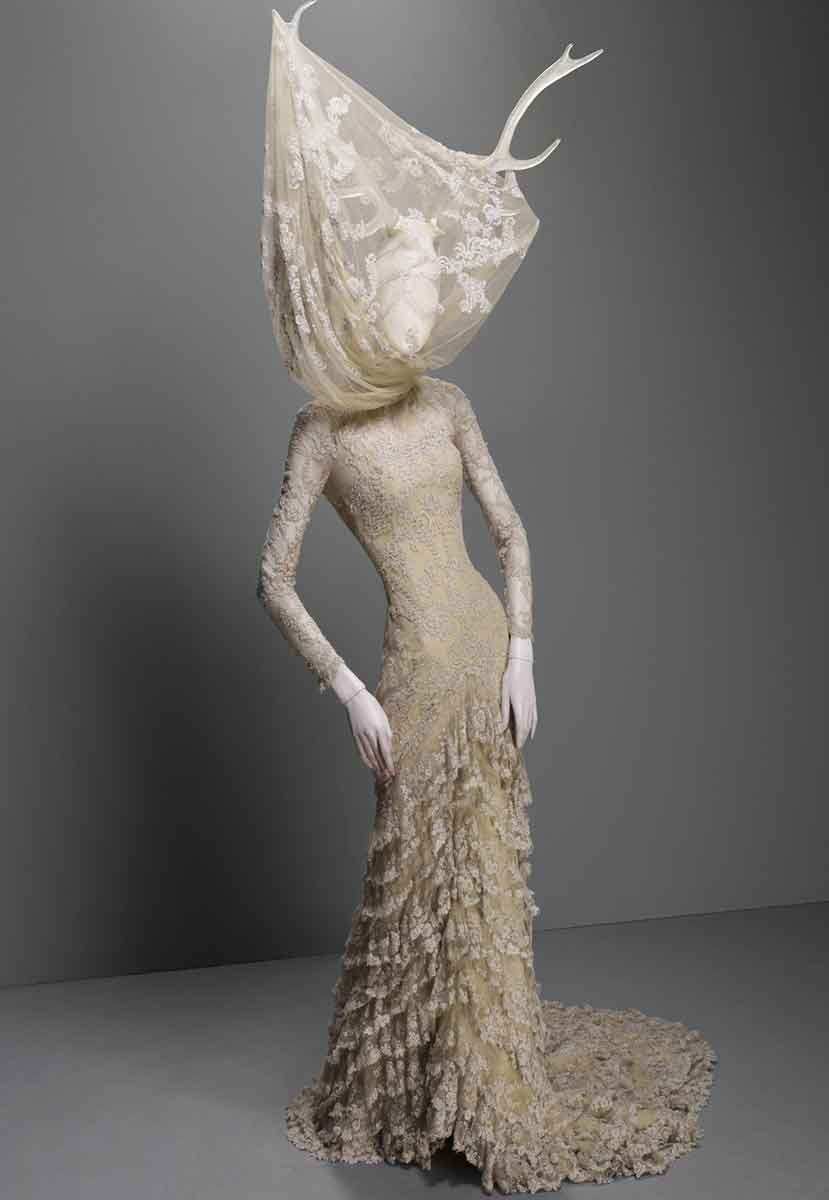
Get the latest articles delivered to your inbox
Sign up to our Free Weekly Newsletter
After seeing McQueen’s dark and disturbing creations, some members of the public labeled him a misogynist promoting violence against women, but the artist was appalled by these accusations. His family had a history of male abuse and McQueen saw his art as a way of protecting women from it. In nature, the prey often tries to scare the predator off with its abnormal form or coloring and McQueen used the same principle to shield his women from the violence around them.
After McQueen’s death in 2010, his long-time assistant Sarah Burton became the new creative director of the brand. Without McQueen in charge, the brand switched from high art to more wearable items, although still remarkable in tailoring and craftsmanship. Still, McQueen’s legacy lingers on and continues to inspire new generations of artists and designers. Here are five cases where McQueen was inspired by artworks.
1. VOSS and Joel-Peter Witkin
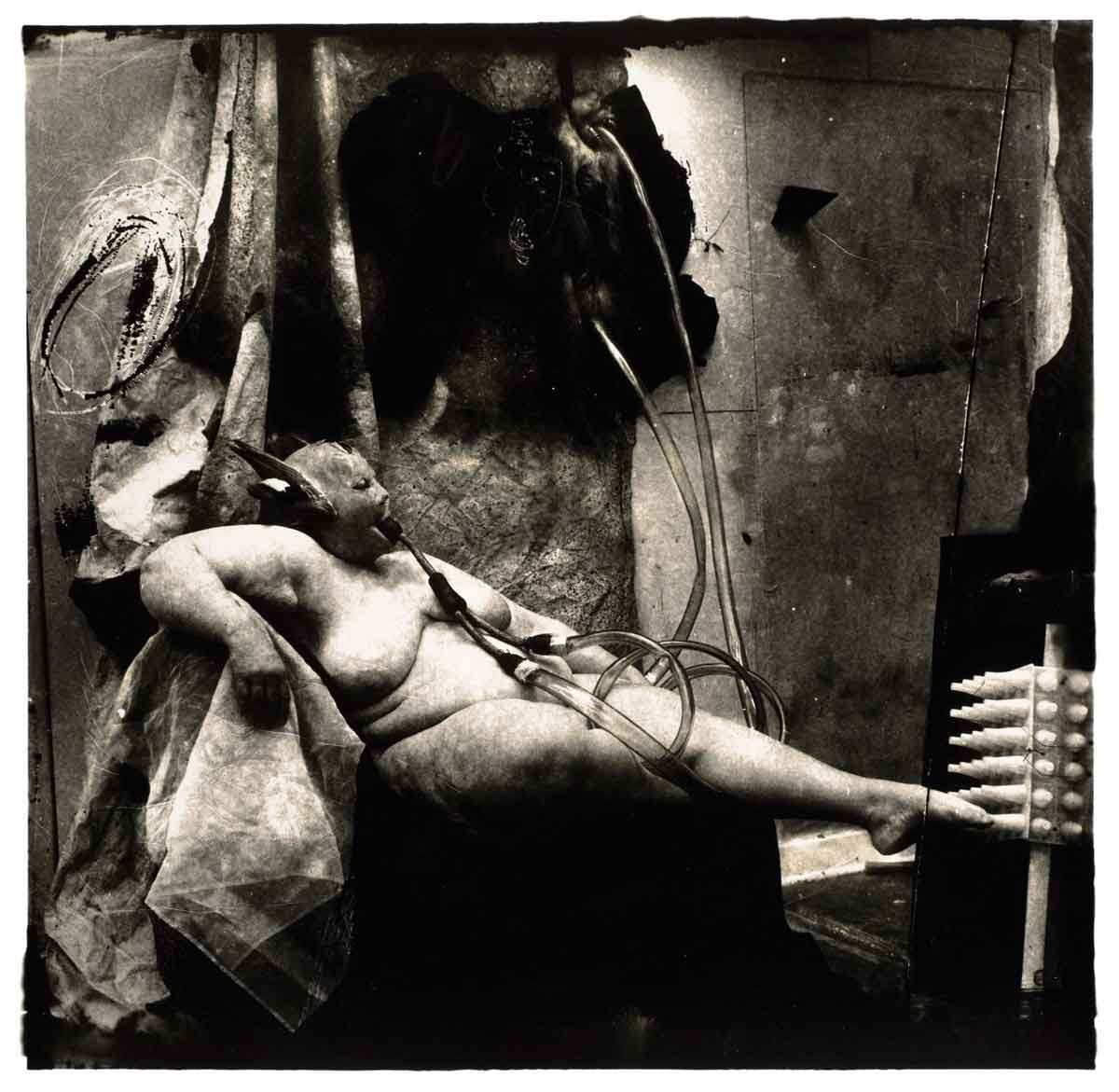
The 2001 show VOSS was one of the most memorable moments in 21st-century fashion. This remains one of the most recognizable collections designed by McQueen. It started with an unprecedented two-hour delay where the guests had to sit in front of a black glass cube, staring at their own reflections.
As the lights turned on, the structure transformed into a mental asylum. Inside the glass cube, a sterile white environment with padded walls unfolded. The show was not about fashion per se but about the darker side of it: the side of mental health issues, drug abuse, and crushed hopes which were all too familiar to McQueen himself.
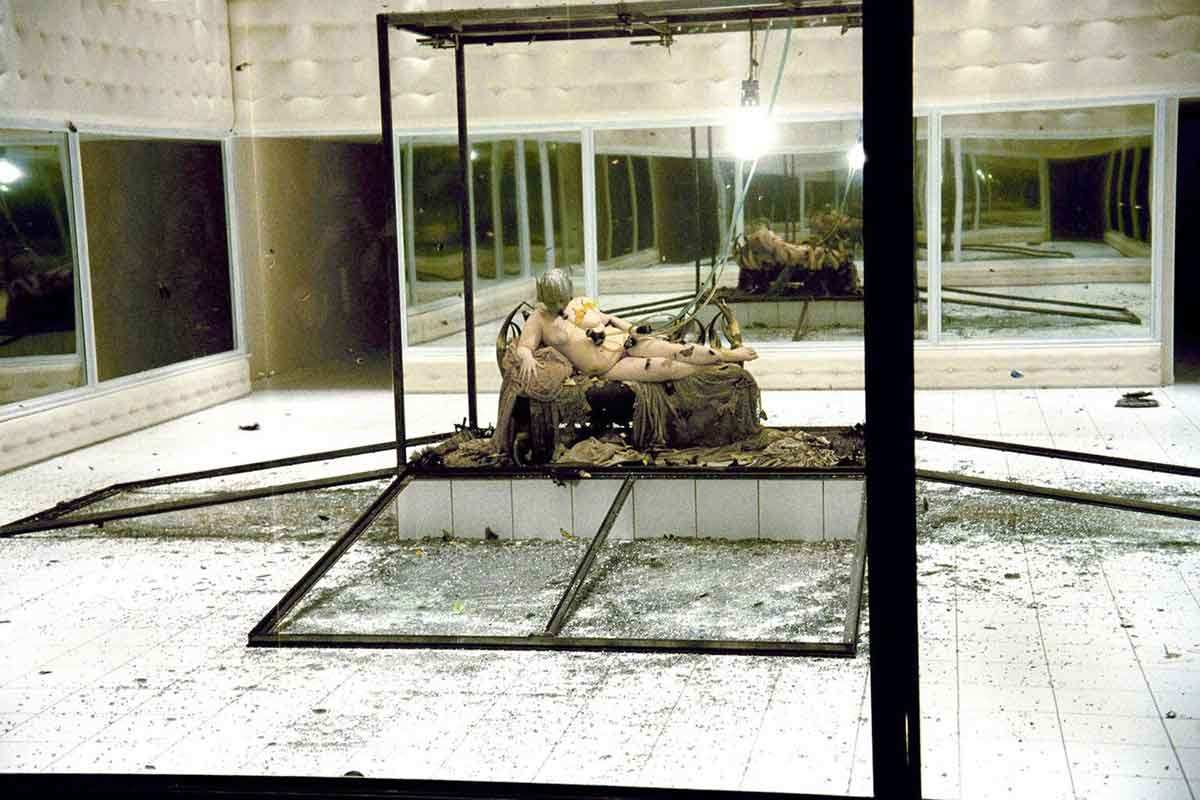
The final act of the show was the most important one, yet this time there wasn’t a model in yet another astonishing dress. As the show came to a close, the walls of a dark cube in the center of the podium finally collapsed, revealing a nude woman wearing a gas mask with dozens of moths clinging to her body. The woman was the British writer Michelle Olley, a friend of McQueen. The image was directly inspired by an image called Sanitarium which was created by the American photographer Joel-Peter Witkin. Witkin is famous for his disturbing compositions, often involving people with severe disabilities and even corpses. By recreating his work, McQueen deliberately put on display everything that was taboo in fashion.
2. №13 Collection and Rebecca Horn
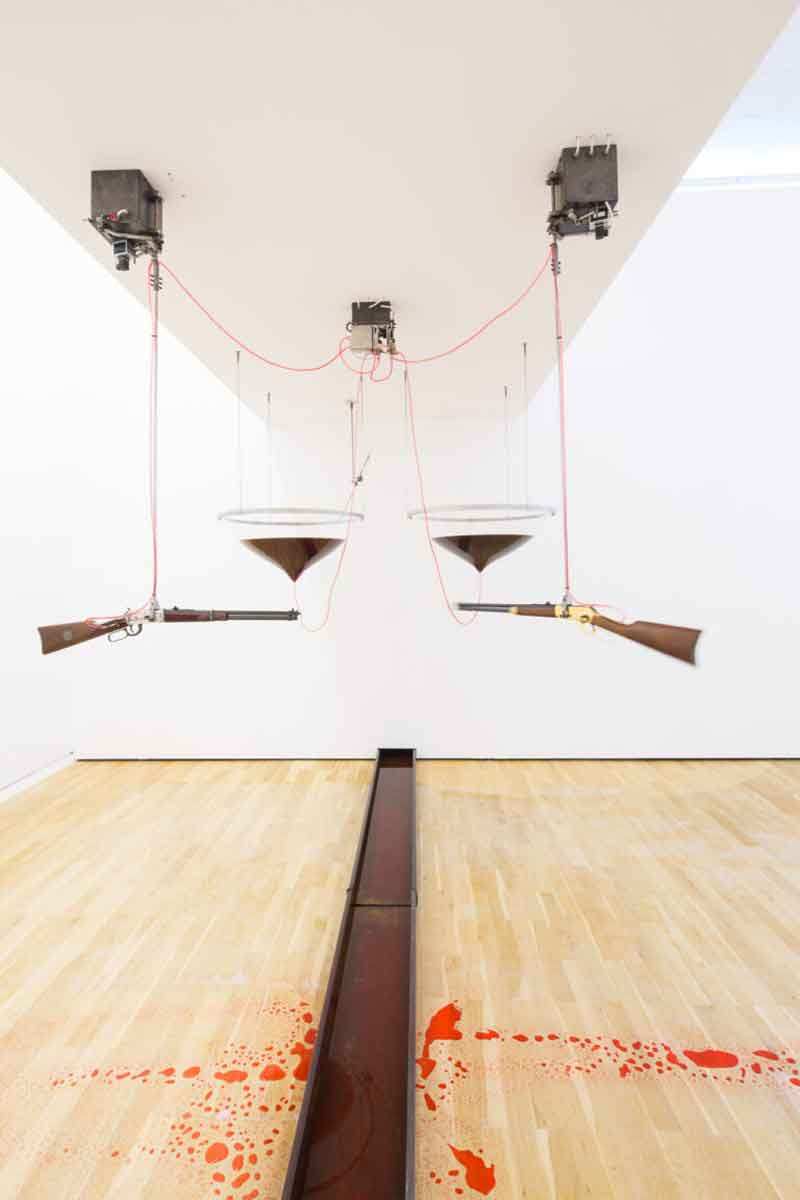
This collection came from several sources of inspiration, from the Arts and Crafts movement to World War I prosthetics. However, the show’s most famous act was inspired by a specific contemporary artwork called High Moon. The installation was made by the German artist Rebecca Horn and it consists of two rifles hanging from the ceiling, each connected to a reservoir with blood-colored liquid. The rifles aim at each other, with blood dripping from them.
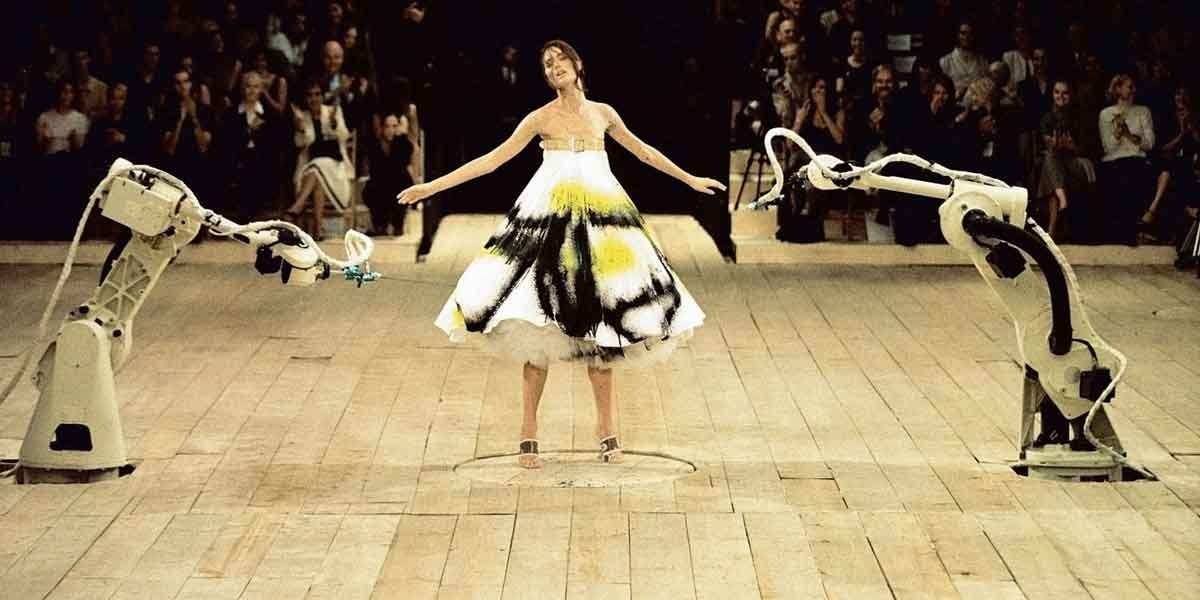
McQueen’s interpretation of work was less unsettling but it still impressed the audience. Some guests were even crying during the show. Model Shalom Harlow entered the room wearing a pristine white shoulderless gown fixed on her chest with a leather belt. Harlow, a former ballerina, danced on a rotating podium between two robotic arms, which sprayed her dress with black and yellow paint. The show was all about technology and craftsmanship.
These robotic arms would make another appearance a decade later. The show Plato’s Atlantis, the final collection presented during Alexander McQueen’s short life, featured several robots with cameras scrutinizing the look of every model on the podium.
3. Joan and the Melun Diptych
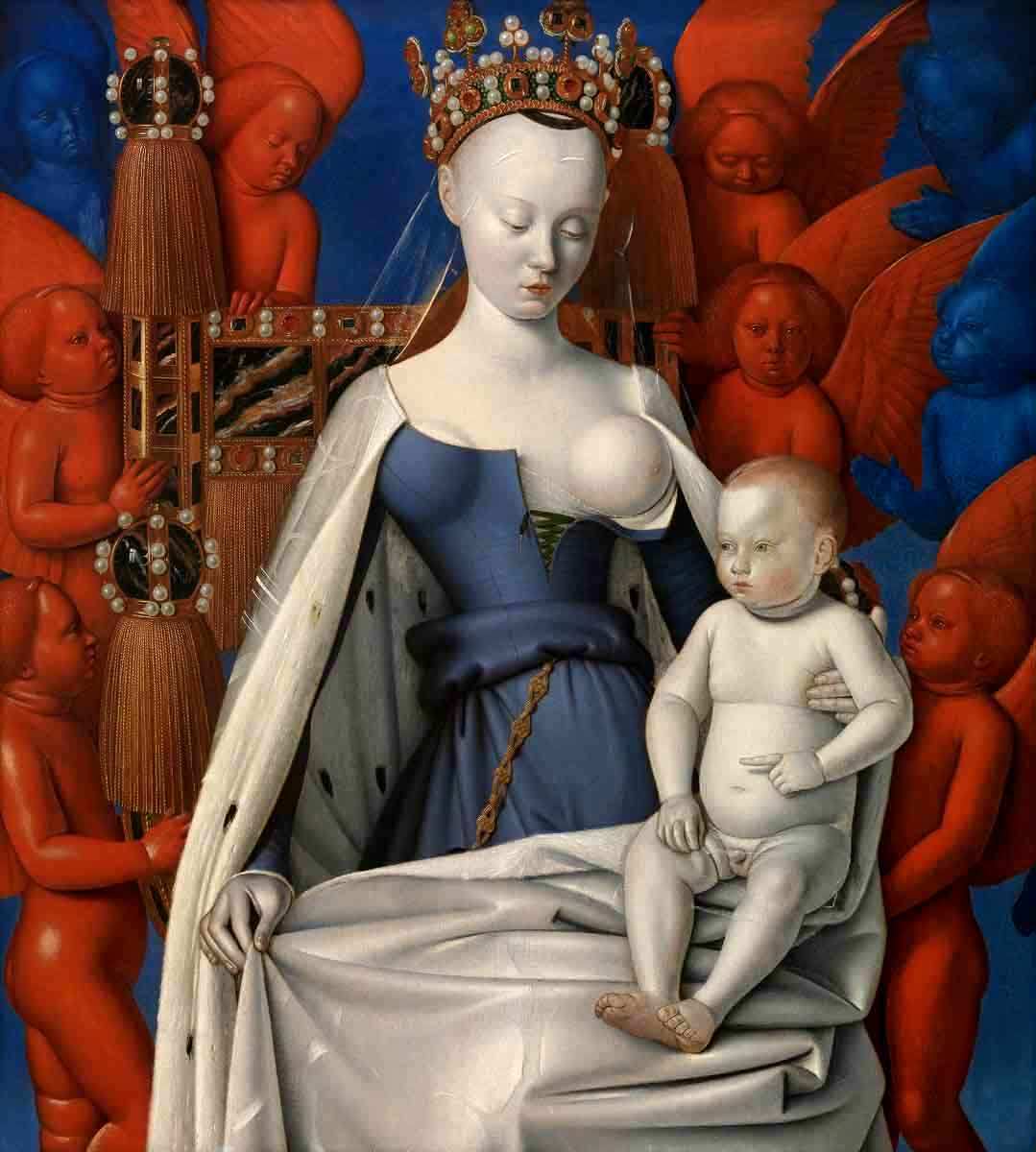
The collection Joan borrowed its name and inspiration from Joan of Arc, a Catholic martyr and the patron saint of France. Joan of Arc was a military leader who insisted on the coronation of Charles VII as the king of France. She fought in the Hundred Years’ War and was captured by the English forces and burnt at the stake in 1431. In his 1998 collection, Alexander McQueen used metal mesh mimicking armor and the portraits of the murdered Romanov children, intervening two historical tragedies together.
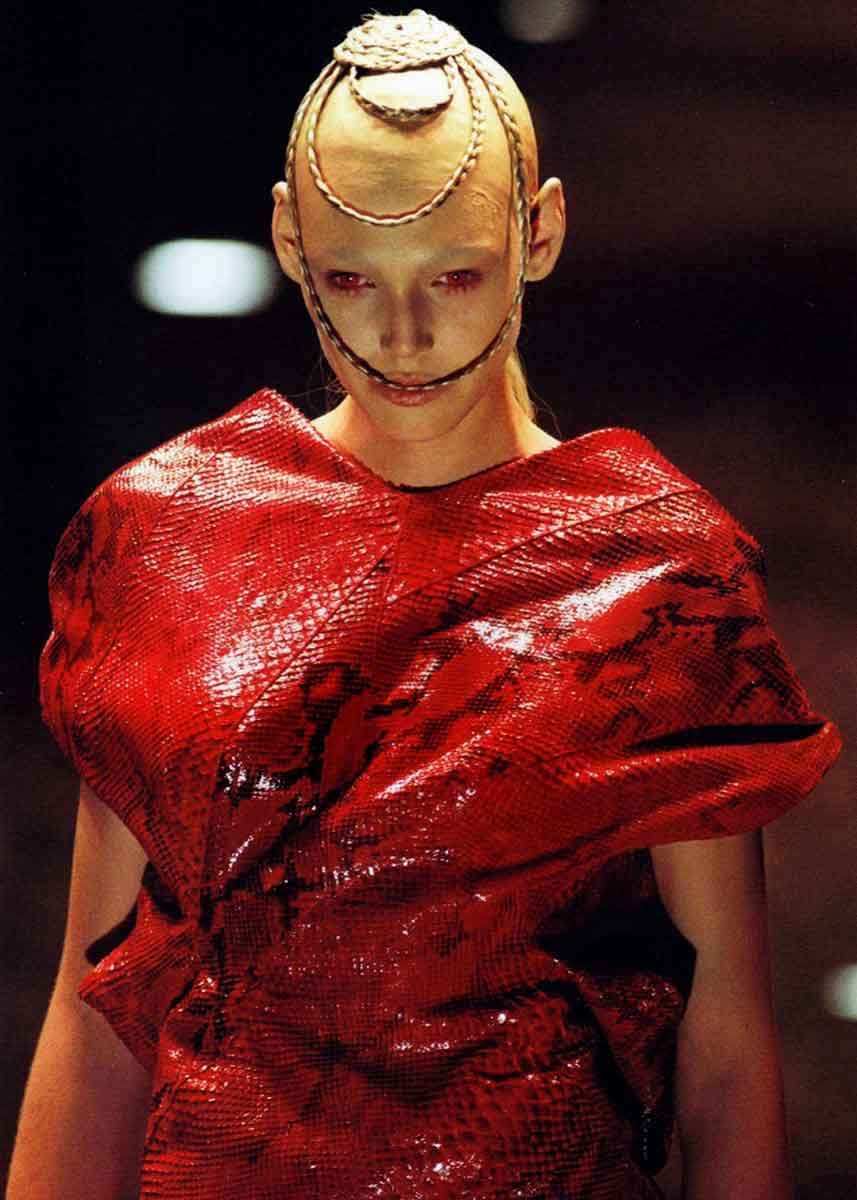
One of the main artistic inspirations for the collection came from the Melun Diptych, a fifteenth-century work made by Jean Fouquet. The image of the Virgin Mary from the Diptych was modeled after Agnes Sorel, the favorite of King Charles VII. According to historians, the King’s family members poisoned Sorel, concerned with her excessive influence on his political decisions. Just like the death of Joan of Arc, Sorel’s death was an act of devotion to her King. The models’ hair held the most direct reference to the Diptych. Although the Virgin Mary appears bald at first, the viewer can notice a thin braid peeking from her crown. Some of McQueen’s models wore these types of braids over bald caps.
4. It’s a Jungle Out There and Robert Campin
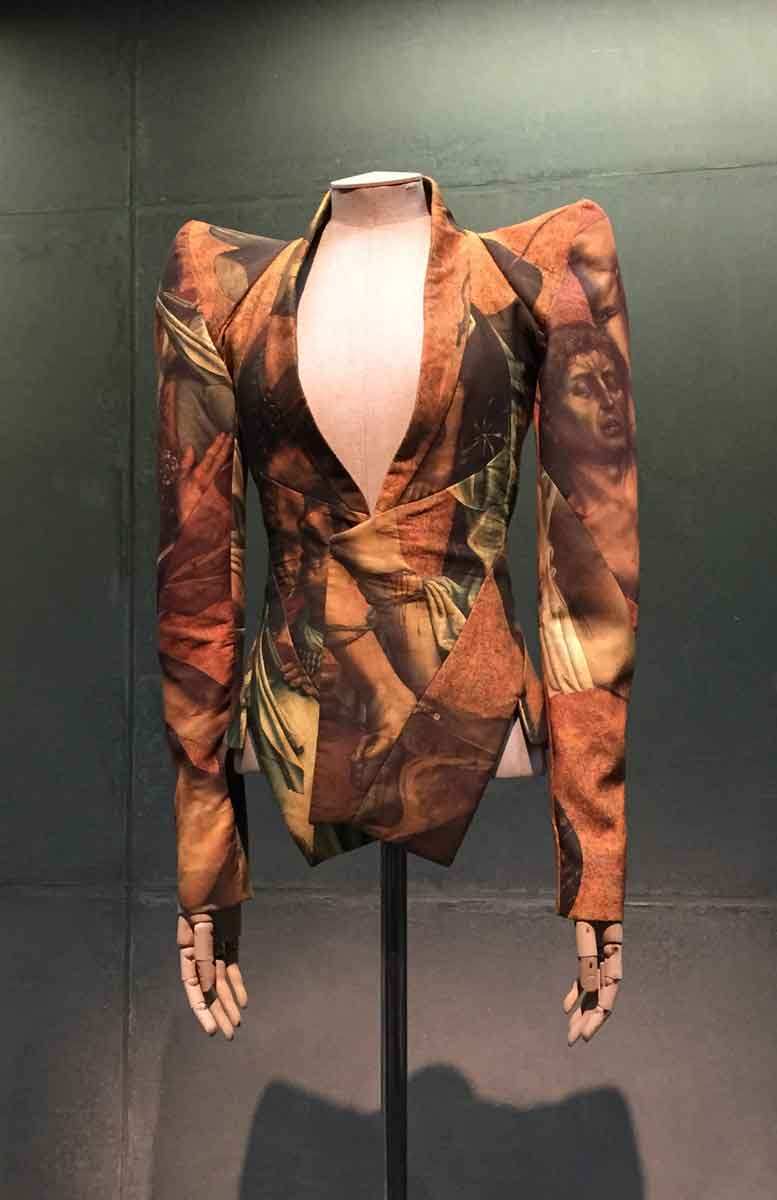
It’s a Jungle Out There collection was presented soon after McQueen’s debut as the creative director of Givenchy. The appointment was highly controversial since the conservative clients of Givenchy opposed the provocative avant-garde side of McQueen. Tired of external pressure, he decided to unwind through designs for his own brand. Apart from more or less wearable designs, some garments had pieces of taxidermy attached, like a jacket with impala horns or a bodysuit with crocodile heads as epaulets. Hair, makeup, and set design were equally shocking, with mohawks and animal ears attached to models’ heads.
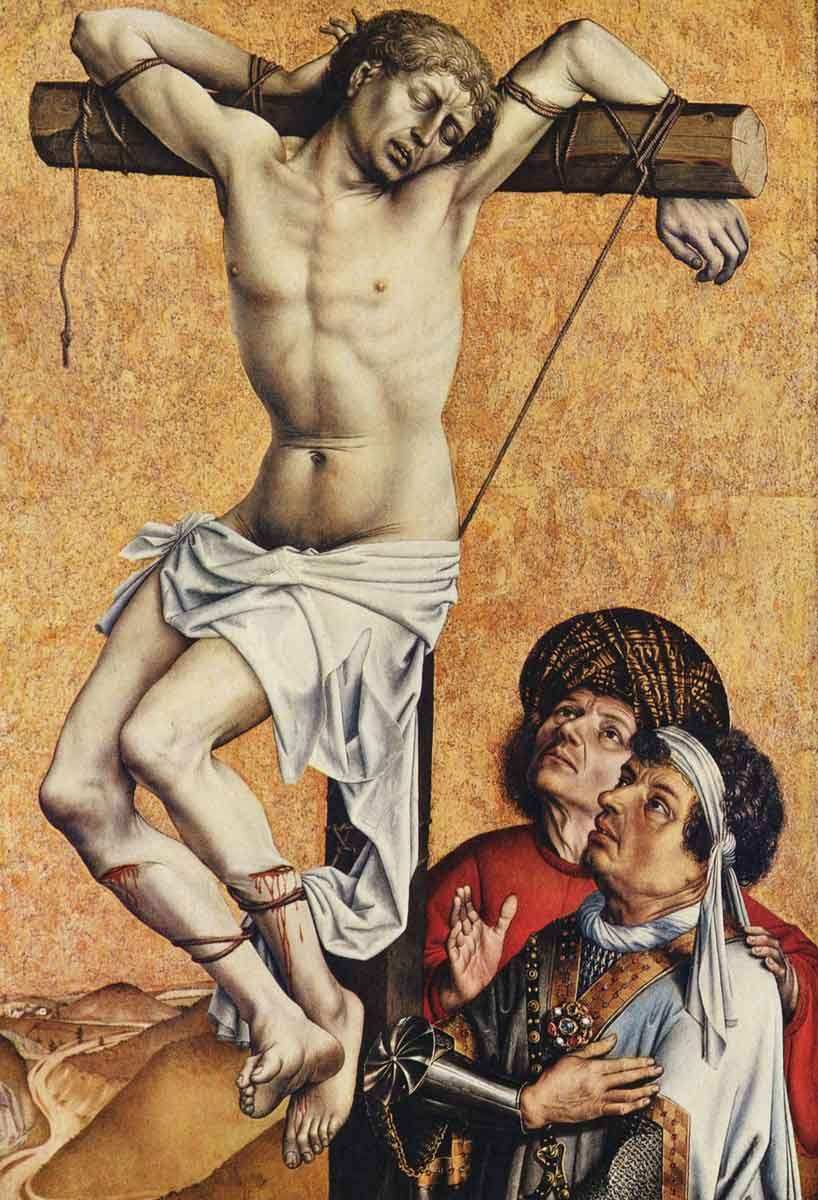
Among horns, crocodile heads, and feline-like makeup there was one unlikely image, a print based on the fifteenth-century painting by the Flemish painter Robert Campin. The crucified figure was not Jesus but one of the thieves that was executed with him. According to McQueen’s design team, the mood board for the collection was full of photographs of lions devouring antelopes. McQueen equated the suffering of a poor animal to the religious act of penitence and redemption.
5. The Last Creations of Alexander McQueen: Angels & Demons
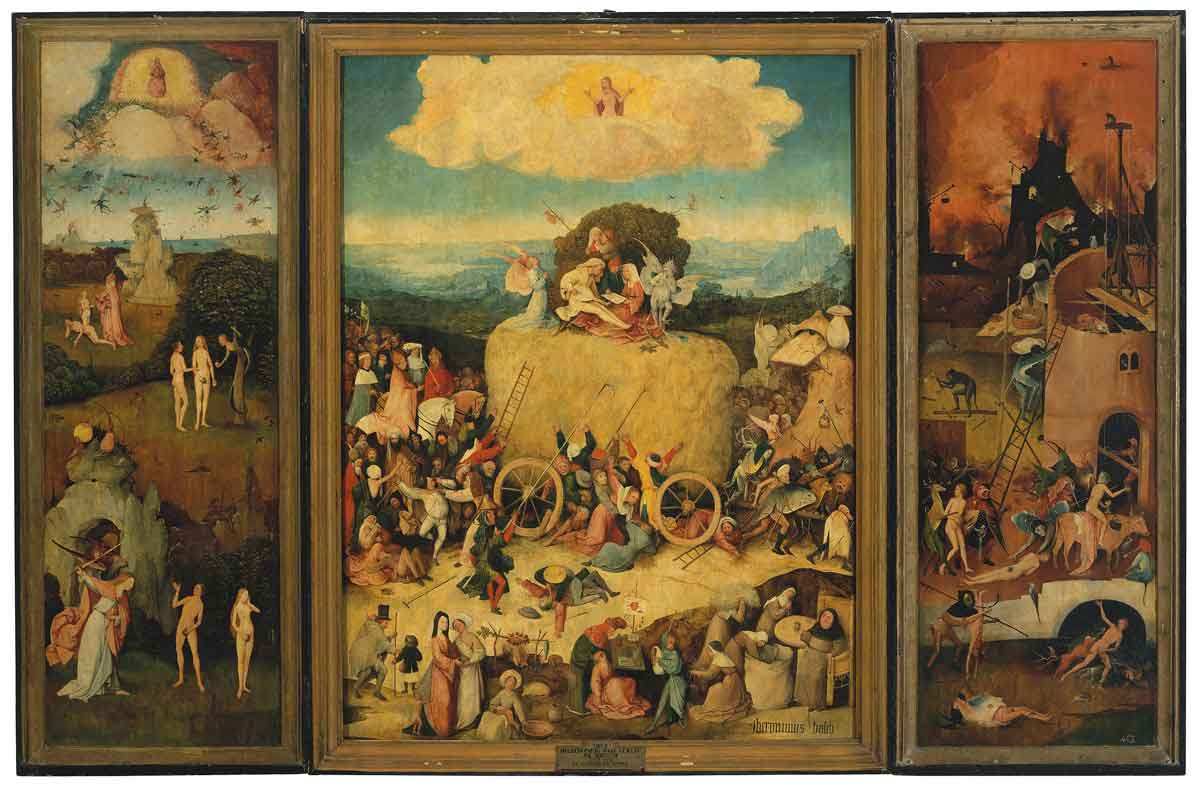
In February 2010, Alexander McQueen committed suicide in his London apartment. He left a note asking for someone to take care of his dogs without explaining the motives behind his decision to take his own life. Three years prior, McQueen’s closest friend, journalist Isabella Blow, killed herself after a series of unsuccessful suicide attempts. In early February 2010, McQueen’s mother passed away and this event might have been the point of no return for the designer.
The last show, unofficially titled Angels & Demons was presented just a month after the designer’s death. He left the collection almost completed, but McQueen’s design team, including the present-day creative director Sarah Burton, had to add some finishing touches. Some assistants noticed that the unfinished garments felt like a requiem and a farewell from the designer. The show had no music or sound to accompany it, with models slowly walking in complete silence.
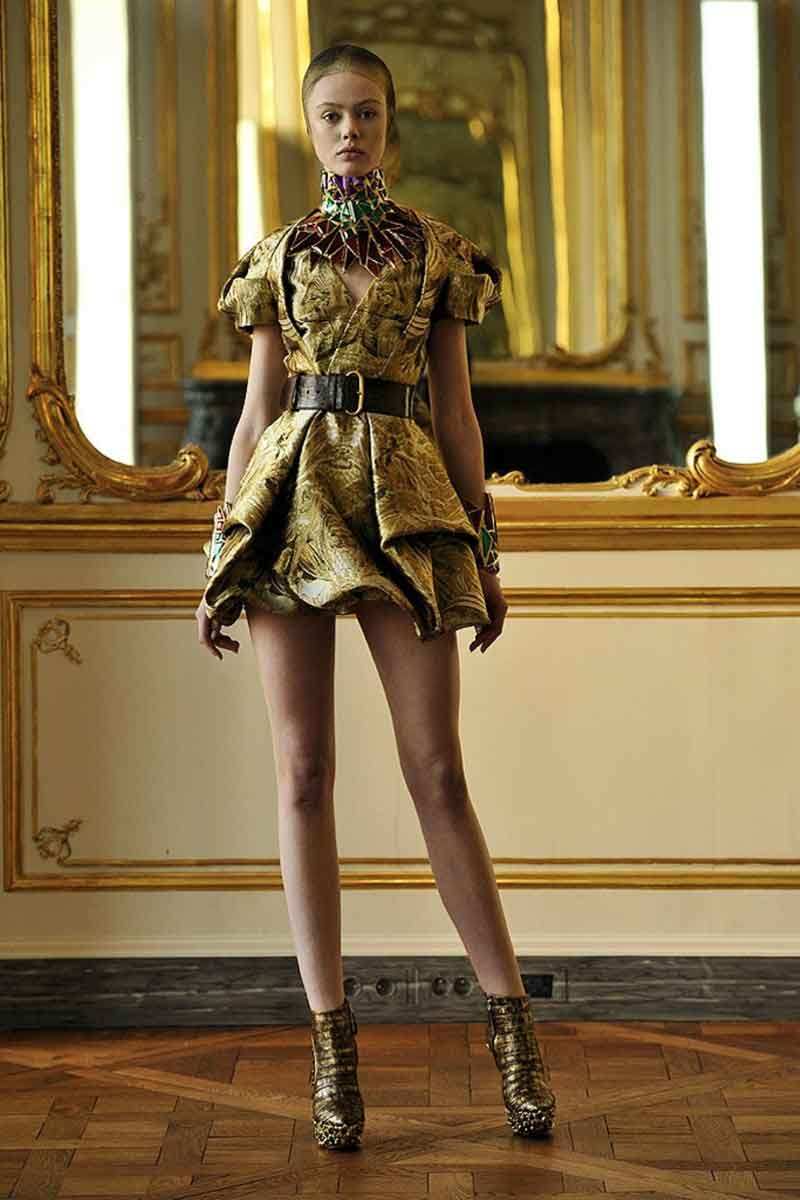
Angels & Demons was the most richly decorated collection designed by McQueen. Although he always mixed exquisite craftsmanship with cutting-edge technology, his last creation relied mostly on hand-crafted details and decorations. Apart from gilded feathers, silk, and brocade, the garments had prints of Sandro Botticelli’s ethereal angels and Hieronymus Bosch’s demons. The duality of salvation and suffering, the faith and the absence of it, and the glimpse into the afterlife, all reflected McQueen’s continuous struggle during the last years of his life.
This post was originally published on this site be sure to check out more of their content.









